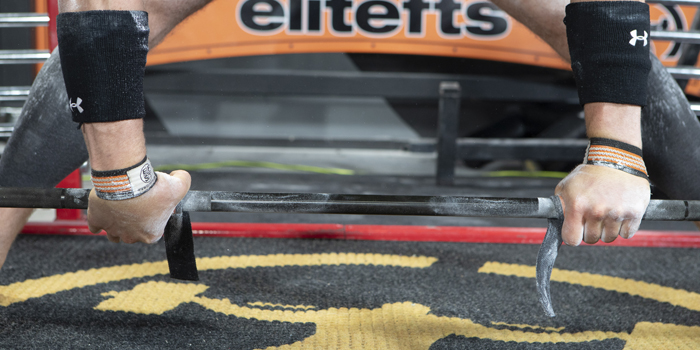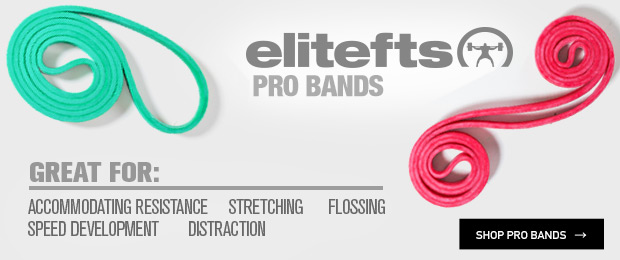
The following article is from Chapter 2 of Michael Tuchscherer’s book, The Reactive Training Manual: Developing Your Own Custom Training Program for Powerlifting.
This chapter concerns the rate of perceived exertion (RPE) system in reactive training. Pay attention because if you don’t get this right, the entire system can be thrown off to a degree. This information is absolutely essential to making the program effective as you advance to higher stages.
What is RPE?
RPE is how hard something feels to you at the time. It is a subjective measure of your strength at a given time. We rate this on a scale from one to ten. The higher the number, the harder the set felt. You can develop your own or use the one that we will discuss in this chapter. The main thing is that you’re consistent.
Let’s start with why you should use an RPE scale as opposed to a percentage program. Even though percentage programs are easy to use, they’re very limited in how accurate they can be. There are many things that throw off your percentages. The longer you go in a training cycle, the less accurate they become due to your individual strength adaptation. Each athlete is different because of differences in training history, fast to slow twitch ratios, illnesses, good and bad days, and general sleep patterns. Basically, life happens, and you won’t always be 100 percent when you come in to train.
An RPE overcomes this stuff by allowing you to regulate training based on how hard a weight feels (which is all a percentage tries to do anyway). By using an RPE, you can regulate training more effectively and do so in a way that automatically takes into account all of the individual differences mentioned above.
RPE Scale
If you’re curious as to what RPE is, here’s the scale that we use:
10: Maximal, no reps left in the tank
9: Last rep is tough but still one rep left in the tank
8: Weight is too heavy to maintain fast bar speed but isn’t a struggle; 2–4 reps left
7: Weight moves quickly when maximal force is applied to the weight; “speed weight”
6: Light speed work; moves quickly with moderate force
5: Most warm-up weights
4: Recovery; usually 20 plus rep sets; not hard but intended to flush the muscle
An RPE below four isn’t important.
How RPE Works
Here’s how it works. You apply it to a set/rep range. For example, if you were going to do 5 X 5 at an 8–9 RPE, you know that you’re doing 5 X 5 with a weight that is between an eight RPE and a nine RPE. So you should select a weight that will allow you to do between one and four more reps than the set requires.
If the RPE system seems awkward at first, don’t worry. You’ll get used to it and be able to use it quickly. An easy way to gauge the RPE of a set is to ask yourself how many more reps you could’ve done with a particular weight. Here is where honesty is the absolute key! If you’re too macho and say, “Yea, I could have done one more” when you know that the set was maximal, your training will be thrown off. This tends to be tough for the training hotheads who always want to go heavy but also for the timid who are afraid to push themselves. You must be disciplined to use this method effectively!
There is also a chart that I developed that roughly correlates an RPE and rep range to a percentage. It should only be used as a guide, not to attempt to derive a max.
As you can see, for each rep range and the correlating RPE, there is a percentage. Eighty percent is where peak force is produced. Be careful with how much time you spend in the 90 percent plus area. The closer you are to the upper right corner, the more accurate the chart is.
How to Use RPE
Here’s how to use it. In the above example, you can see that we did 5 X 5 at 8–9 RPE. Using the chart, this roughly correlates to 70–7 percent. The next time you may want to pick a protocol that allows you to train in the 80–85 percent range or even the 90 percent plus range. The choice is up to you and how you want to program your training, but this tool can help you approximate how heavy you have been going in terms of percentage.
So using this knowledge, here is what happens to your protocols:
Volume (sets X reps)
- 6 X 3 at 8–9
- 6 X 2 at 8–9
Speed work ups:
- 8 X 2 at 6–7
Then work up to 1 X 2 at 8–9
- 5 X 5 at 9–10
- 6 X 4 at 8–9
Intensity
- 1–3 rep max
- 3 X 3 at 9–10
- 4 X 2 at 9–10
- 4–5 X 1 at 9–10
Just to reiterate, RPE allows you to regulate your training intensity based on your condition right now, not your last meet, yesterday, or even your last set. It allows you to quantify where your preparedness is at any given time. This is an extremely powerful tool and one that will be invaluable in the reactive training system.
Originally published in December of 2009
The founder of Reactive Training Systems, Mike Tuchscherer has taught more than 500 athletes and coaches how to make better training decisions. Whether through innovative concepts or ground-level coaching, free online systems or direct teaching, his lifting, or the coaching of others, Mike has inspired countless other powerlifters to individualize their training so that it works best for them.










